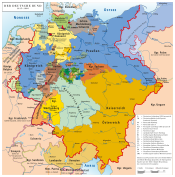Liechtenstein
Principality of Liechtenstein Fürstentum Liechtenstein(German) | |
|---|---|
| Motto:"Für Gott, Fürst und Vaterland" "For God, Prince and Fatherland" | |
| Anthem: | |
![Location of Liechtenstein (green) in Europe (agate grey) – [Legend]](https://upload.wikimedia.org/wikipedia/commons/thumb/2/23/Europe-Liechtenstein.svg/250px-Europe-Liechtenstein.svg.png) | |
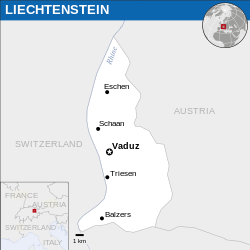 | |
| Capital | Vaduz |
| Largest municipality | Schaan 47°10′00″N9°30′35″E/ 47.16667°N 9.50972°E |
| Official languages | German |
| Ethnic groups (2017)[1] |
|
| Religion (2020)[2] |
|
| Demonym(s) | Liechtensteiner |
| Government | Unitary parliamentarysemi-constitutional monarchywith elements of adirect democracy |
| Hans-Adam II | |
| Alois | |
| Daniel Risch | |
| Legislature | Landtag |
| Independence asprincipality | |
•Union between Vaduzand Schellenberg | 23 January 1719 |
| 12 July 1806 | |
•Separation from German Confederation | 23 August 1866 |
| Area | |
• Total | 160 km2(62 sq mi) (190th) |
• Water (%) | 2.7[3] |
| Population | |
• 2023 estimate | 40,023[4](189th) |
• Density | 237/km2(613.8/sq mi) (57th) |
| GDP(PPP) | 2013 estimate |
• Total | $5.3 billion[5](149th) |
• Per capita | $98,432[6][7][8](3rd) |
| GDP(nominal) | 2020 estimate |
• Total | $6.872 billion[9][7][8](147th) |
• Per capita | $180,000[9][6][7][8](1st) |
| HDI(2022) | very high(12th) |
| Currency | Swiss franc(CHF) |
| Time zone | UTC+01:00(CET) |
• Summer (DST) | UTC+02:00(CEST) |
| Driving side | right |
| Calling code | +423 |
| ISO 3166 code | LI |
| Internet TLD | .li |
Liechtenstein(/ˈlɪktənstaɪn/LIK-tən-styne;[11]German:[ˈlɪçtn̩ʃtaɪn]), officially thePrincipality of Liechtenstein(German:Fürstentum Liechtenstein,pronounced[ˈfʏʁstn̩tuːmˈlɪçtn̩ˌʃtaɪ̯n]),[12]is adoubly landlockedGerman-speakingmicrostatecountry in Central Europe in theAlps,betweenAustriaandSwitzerland.[13]Liechtenstein is asemi-constitutional monarchyheaded by theprince of Liechtensteinof theHouse of Liechtenstein,currently led byHans-Adam II.Liechtenstein is bordered by Switzerland to the west and south and Austria to the east and north. It isEurope's fourth-smallest country,with an area of just over 160 square kilometres (62 square miles) and a population of 40,023.[14]It is the world's smallest country to border two countries.[15]
Liechtenstein is divided into11 municipalities.Its capital isVaduz,and its largest municipality isSchaan.It is a member of theUnited Nations,theEuropean Free Trade Association,and theCouncil of Europe.It is not a member state of theEuropean Union,but it participates in both theSchengen Areaand theEuropean Economic Area.It has acustoms unionand amonetary unionwith Switzerland, with its usage of theSwiss franc.Politically, aconstitutional referendumin 2003 granted themonarchgreater powers, including being able to dismiss the government, nominate judges andvetolegislation.[16]
Economically, Liechtenstein has one of thehighest gross domestic products per person in the worldwhen adjusted forpurchasing power parity.[17]The country has a strongfinancial sectorcentred in Vaduz. It was once known as a billionairetax haven,culminating in atax affairin 2008, but the principality has since made vast efforts to shed this reputation. AnAlpine country,Liechtenstein is mountainous, making it awinter sportdestination.
History[edit]
Early history[edit]


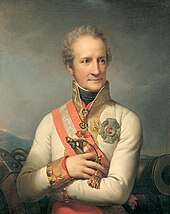
The oldest traces of human existence in the area of present-day Liechtenstein date back to theMiddle Paleolithicera.[18]Neolithicfarming settlements appeared in the valleys around 5300 BCE.
TheHallstattandLa Tène culturesflourished during the lateIron Age,from around 450 BCE—possibly under some influence of both theGreekandEtruscancivilisations. One of the most important tribal groups in the Alpine region were theHelvetii.In 58 BCE, at theBattle of Bibracte,Julius Caesardefeated the Alpine tribes, thereby bringing the region underRomansubjugation. By 15 BCE,Tiberius—later the second Roman emperor—with his brother,Drusus,conquered the entire Alpine area.[19]
Liechtenstein then became integrated into theRoman provinceofRaetia.The area was garrisoned by theRoman army,which maintained large legionary camps atBrigantium(Bregenz, Austria), nearLake Constance,and atMagia(Maienfeld, Switzerland). The Romans built and maintained aroadwhich ran through the territory. Around 260 CE Brigantium was destroyed by theAlemanni,aGermanic peoplewho later settled in the area around 450.[20]
In theEarly Middle Ages,the Alemanni settled the easternSwiss plateauby the 5th century and thevalleys of the Alpsby the end of the 8th century, with Liechtenstein located at the eastern edge ofAlamannia.In the 6th century the entire region became part of theFrankish EmpirefollowingClovis I's victory over the Alemanni atTolbiacin 504.[21][22]
The area that later became Liechtenstein remained under Frankish hegemony (MerovingianandCarolingiandynasties) until theTreaty of Verdundivided the Carolingian empire in 843, following the death ofCharlemagnein 814.[18]The territory of present-day Liechtenstein formed part ofEast Francia.It would later be reunified withMiddle Franciaunder theHoly Roman Empire,around 1000.[18]Until about 1100, the predominant language of the area wasRomansch,but thereafterGermanbegan to gain ground in the territory. In 1300, another Alemannic population—theWalsers,who originated inValais—entered the region and settled; the mountain village ofTriesenbergtoday preserves features of theWalser dialect.[23]
Foundation of a dynasty[edit]
By 1200, dominions across the Alpine plateau were controlled by the Houses ofSavoy,Zähringer,Habsburg,andKyburg.Other regions were accorded theImperial immediacythat granted the empire direct control over the mountain passes. When the Kyburg dynasty fell in 1264, the Habsburgs underKing Rudolph I,the Holy Roman Emperor in 1273, extended their territory to the eastern Alpine plateau that included the territory of Liechtenstein.[21]This region wasenfeoffedto theCounts of Hohenemsuntil the sale to theLiechtenstein dynastyin 1699.
In 1396,Vaduz,the southern region of Liechtenstein, gainedimperial immediacy,i.e. it became subject to the Holy Roman Emperor alone.[24]
The family from which the principality takes its name originally came fromLiechtenstein Castlein Lower Austria, which they had possessed since at least 1140 until the 13th century, and again from 1807 onwards. The Liechtensteins acquired land, predominantly inMoravia,Lower Austria,Silesia,andStyria.As these territories were all held infeudal tenurefrom more senior feudal lords, particularly various branches of theHabsburgs,the Liechtenstein dynasty was unable to meet a primary requirement to qualify for a seat in the Imperial diet (parliament), theReichstag.Even though several Liechtenstein princes served several Habsburg rulers as close advisers, without any territory held directly from the Imperial throne, they held little power in the Holy Roman Empire.
For this reason, the family sought to acquire lands that would be classed asunmittelbar,or held without any intermediate feudal tenure, directly from theHoly Roman Emperor.During the early 17th century,Karl I of Liechtensteinwas made aFürst(prince) by the Holy Roman EmperorMatthiasafter siding with him in a political battle.Hans-Adam Iwas allowed to purchase the minusculeHerrschaft('Lordship') of Schellenbergand thecounty of Vaduz(in 1699 and 1712, respectively) from the Hohenems. Tiny Schellenberg and Vaduz had exactly the political status required: no feudal lord other than theircomitalsovereign and thesuzerainEmperor.
Principality[edit]
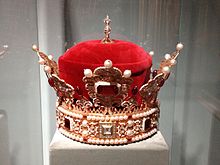
On 23 January 1719,[25]after the lands had been purchased,Charles VI, Holy Roman Emperor,decreed that Vaduz and Schellenberg were united and elevated the newly formed territory to the dignity ofReichsfürstentum(imperial principality) with the name "Liechtenstein" in honour of "[his] true servant,Anton Florian of Liechtenstein".On this date, Liechtenstein became amostly-sovereignimmediatemember state of theHoly Roman Empire.[25]
By the early 19th century, as a result of theNapoleonic Warsin Europe, the Holy Roman Empire came under the effective control of France, following the crushing defeat atAusterlitzbyNapoleonin 1805. In 1806, EmperorFrancis IIabdicated anddissolved the Holy Roman Empire,ending more than 960 years of feudal government. Napoleon reorganized much of the Empire into theConfederation of the Rhine.This political restructuring had broad consequences for Liechtenstein: the historical imperial, legal, and political institutions had been dissolved. The state ceased to owe an obligation to any feudal lord beyond its borders.[25]
Modern publications generally attribute Liechtenstein's sovereignty to these events. Its prince ceased to owe an obligation to anysuzerain.From 25 July 1806, when theConfederation of the Rhinewas founded, the Prince of Liechtenstein was a member, in fact a vassal, of itshegemon,styledprotector,the French Emperor Napoleon I, until the dissolution of the confederation on 19 October 1813.
Soon afterward, Liechtenstein joined theGerman Confederation(20 June 1815 – 23 August 1866), which was presided over by theEmperor of Austria.
In 1818,Prince Johann Igranted the territory a limited constitution. In that same yearPrince Aloysbecame the first member of the House of Liechtenstein to set foot in the principality that bore their name. The next visit would not occur until 1842.
Developments during the 19th century included:
- 1842: the first factory for making ceramics was opened.
- 1861: the Savings and Loans Bank was founded along with the first cotton-weaving mill.
- 1866: the German Confederation was dissolved.
- 1868: the Liechtenstein Army was disbanded for financial reasons.
- 1872: arailway linebetween Switzerland and the Austro-Hungarian Empire was constructed through Liechtenstein.
- 1886: two bridges over the Rhine to Switzerland were built.
20th century[edit]
Until the end ofWorld War I,Liechtenstein was closely tied first to theAustrian Empireand later toAustria-Hungary;the ruling princes continued to derive much of their wealth from estates in the Habsburg territories, and spent much of their time at their two palaces in Vienna.Johann IIappointedCarl von In der Maur,an Austrian aristocrat, to serve as theGovernor of Liechtenstein.The economic devastation caused by World War I forced the country to conclude acustoms and monetary unionwith its other neighbourSwitzerland.[26]In addition, popular unrest caused from economic devastation in the war directly led to theNovember 1918 Liechtenstein putsch,which created the process of anew constitutionbased onconstitutional monarchybeing introduced in 1921.[27][28]
In 1929, 75-year-oldPrince Franz Isucceeded to the throne. He had just marriedElisabeth von Gutmann,a wealthy woman from Vienna whose father was a Jewish businessman from Moravia. Although Liechtenstein had no officialNazi party,a Nazi sympathy movement arose within its National Union party.Local Liechtenstein Nazisidentified Elisabeth as their Jewish "problem".[29][30]Pro-Nazi agitation remained in Liechtenstein throughout the 1930s, with anattempted coupin March 1939 whileFranz Joseph IIwas on a state visit toBerlin.[31][32]
In March 1938, just after theannexation of Austria by Nazi Germany,Franz named as regent his 31-year-old grandnephew and heir-presumptive,Prince Franz Joseph.After making his grandnephew regent he moved to Feldberg,Czechoslovakiaand on 25 July, he died while at one of his family's castles, Castle Feldberg, and Franz Joseph formally succeeded him as the Prince of Liechtenstein.[33][34][35]


DuringWorld War II,Liechtenstein remained officially neutral, looking to neighbouring Switzerland for assistance and guidance, while family treasures from dynastic lands and possessions inBohemia,Moravia,andSilesiawere taken to Liechtenstein for safekeeping.Operation Tannenbaum,the Nazi plan for conquest of Switzerland, included also Liechtenstein, and the Nazi "Pan German" dream of uniting all German-speakers in the Reich would have also included the population of Liechtenstein. However, the Nazis eventually gave up implementing this plan, and Liechtenstein was spared from enduring a Nazi occupation.
At the close of the conflict,CzechoslovakiaandPoland,acting to seize what they considered German possessions, expropriated all of the Liechtenstein dynasty's properties in those three regions.[36]The expropriations (subject tomodern legal disputeat theInternational Court of Justice) included over 1,600 km2(618 sq mi) of agricultural and forest land (most notably the UNESCO listedLednice–Valtice Cultural Landscape), and several family castles and palaces.
In 2005, a government-commissioned investigation revealed that Jewish slave labourers from theStrasshofconcentration camp,provided by theSS,had worked on estates in Austria owned by Liechtenstein's Princely House.[37]The report indicated that though no evidence was found of the House's knowledge of the slave labour, the House bore responsibility.[38]
Citizens of Liechtenstein were forbidden to enter Czechoslovakia during theCold War.The diplomatic conflict revolving around the controversial postwarBeneš decreesresulted in Liechtenstein not having international relations with theCzech RepublicorSlovakia.Diplomatic relations were established between Liechtenstein and the Czech Republic on 13 July 2009,[39][40][41]and with Slovakia on 9 December 2009.[42]
On 20 September 1990, Liechtenstein was admitted into theUnited Nationsas 160th member state. As a member of theUnited Nations General Assembly,the microstate is one of the few not to play a prominent role inUN-specialized agencies.
Financial centre[edit]
Liechtenstein was in dire financial straits following the end of World War II. The Liechtenstein dynasty often resorted to selling family artistic treasures, including the portraitGinevra de' BencibyLeonardo da Vinci,which was purchased by theNational Gallery of Artof the United States in 1967 forUS$5 million ($46 million in 2023 dollars),[43]then a record price for a painting.[44]
By the late 1970s, Liechtenstein used its lowcorporate taxrates to draw many companies and became one of the wealthiest countries in the world.
Liechtenstein is one of the few countries in Europe (along withMonacoandSan Marino)not to have a tax treatywith theUnited States,and efforts towards one seem to have stalled.[45][46]
As of September 2019[update]thePrince of Liechtensteinis the world's sixthwealthiest monarch,with an estimated wealth ofUS$3.5 billion.[47]The country's population enjoys one of theworld's highest standards of living.
Government[edit]


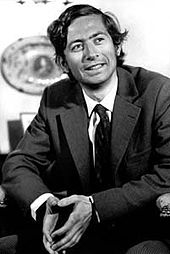
Politics[edit]
Liechtenstein has a somewhat enigmatic political system, which combines elements ofabsolute monarchy,representative democracy,anddirect democracy.Themonarchretains extensive executive and legislative powers, and plays a strong active role in the day to day politics of the country, and over all threebranches of government—the only European monarch to have retained such a role. Representative democracy and direct democracy coexist in that an elected parliament enactslegislation,and voters can propose and enact laws and constitutional amendments independently of the legislature.[48]However, as with laws passed by the legislature, these can be vetoed by the monarch.
The reigning Prince is the head of state and represents Liechtenstein in its international relations (although Switzerland has taken responsibility for much of Liechtenstein's diplomatic relations).[49]
The currentConstitution of Liechtensteinwasadopted in March 2003,amending the 1921 constitution, giving the prince extensive veto powers, and the ability to dismiss the government and rule by emergency decree, and maintaining the prince's active role in the legislative process. TheBBCcharacterizes Liechtenstein post-2003 as "in effect" an "absolute monarchy".[50]Just prior to the referendum, theVenice commissionof theCouncil of Europepublished a comprehensive report analysing the amendments, opining that they were not compatible with the European standard of democracy.[51]
Legislative authority is vested in the unicameralLandtag,made up of 25 members elected for maximum four-year terms according to a proportional representation formula. Fifteen members are elected from theOberland(Upper Country or region) and ten from theUnterland(Lower Country or region).[52]Parties must receive at least 8% of the national vote to win seats in parliament, i.e., enough for two seats in the 25-seat legislature. Parliament proposes and approves a government, which the Prince formally appoints. Parliament may also pass votes of no confidence in the entire government or individual members.
Thegovernmentcomprises the head of government (prime minister) and four government councillors (ministers), who are appointed by the Prince upon the proposal of parliament and with its concurrence, and reflect the balance of parties in parliament. The constitution stipulates that at least two government members be chosen from each of the two regions.[53]The members of the government are collectively and individually responsible to parliament; parliament may ask the Prince to remove an individual minister or the entire government, or the Prince may do so unilaterally.
Parliament elects from among its members a "Landesausschuss" (National Committee) made up of the president of the parliament and four additional members. The National Committee is charged with performing functions of parliamentary supervision. Parliament shares the authority to propose new legislation with the Prince, and with the citizenry, as both parliament and the citizenry may initiate referendums.[54]
Judicial authorityis vested in the Regional Court at Vaduz, the Princely High Court of Appeal at Vaduz, the Princely Supreme Court, the Administrative Court, and the State Court. The State Court rules on the conformity of laws with the constitution and has five members elected by parliament.[citation needed]
Human rights[edit]
The principality is largelyconservative.On 1 July 1984, Liechtenstein became the last country inEuropeto grant women the right to vote, following three previous referendums which rejected it in1968,1971and1973.Thereferendum on women's suffragethat year, in which only men were allowed to participate, narrowly passed with 51.3% in favour.[55]
In 2024, Liechtenstein passedsame-sex marriagelegislation, which would be legalised in 2025.[56][57][58]Abortionremains criminalised within Liechtenstein.
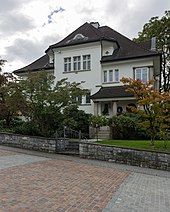
Foreign relations[edit]
In the absence of political or military power, Liechtenstein has sought to preserve itssovereigntyover the past 300 years through membership in legal communities.International cooperationand European integration are therefore constants of Liechtenstein's foreign policy, aimed at continuing to safeguard the country's sovereignty as recognized under international law. Decisive for the domestic legitimacy and sustainability of this foreign policy were and are strong direct-democratic and citizen-oriented decision-making mechanisms, which are anchored in Liechtenstein in the Constitution of 1921.
Important historical stages in Liechtenstein's integration and cooperation policy were its accession to theConfederation of the Rhinein 1806,[59]to the German Confederation in 1815,[60]the conclusion of bilateral customs and currency agreements with theHabsburg monarchyin 1852, and finally the Customs Treaty with Switzerland in 1923, which was followed by a range of other important bilateral treaties.
Post-war economic reconstruction was followed by accession to the Statute of theInternational Court of Justicein 1950, Liechtenstein signed the CSCE Helsinki Final Act (today's OSCE) together with 34 other states in 1975, Liechtenstein joined theCouncil of Europein 1978,[61]and Liechtenstein was admitted to the United Nations (UN) on September 18, 1990.[62]In 1991, Liechtenstein joined the European Free Trade Association (EFTA) as a full member, and since 1995 Liechtenstein has been a member of theEuropean Economic Area(EEA) and theWorld Trade Organization(WTO).[63]
In 2008, Liechtenstein joined the Schengen/Dublin Agreement together with Switzerland. From an economic and integration policy perspective, relations within the framework of the EEA and the EU occupy a special position in Liechtenstein's foreign policy. The Hereditary Prince of Liechtenstein also participates in the annualmeetings of the heads of state of the German-speaking countries(consisting of EU and non-EU members).[64]
Relations with Switzerland are particularly extensive because of the close cooperation in many areas; Switzerland performs tasks in some places that would be difficult for thePrincipalityto handle on its own because of its small size. Since 2000, Switzerland has appointed an ambassador to Liechtenstein, but he resides in Bern. Liechtenstein's consular representation has been mostly handled by Switzerland since theCustomsTreaty with Switzerland of 1923.
Liechtenstein maintains direct diplomatic missions inVienna,Bern, Berlin, Brussels, Strasbourg, andWashington, D.C.,as well as Permanent Missions in New York and Geneva to theUnited Nations.[65]Currently, diplomatic missions from 78 countries are accredited to Liechtenstein, but mostly reside in Bern. TheEmbassyin Brussels coordinates contacts with the European Union, Belgium, and also theHoly See.
For a long time,diplomatic relations with Germanywere maintained through a non-resident ambassador; that is, a contact person who was not permanently resident in Germany. Since 2002, however, Liechtenstein has had a permanentambassadorin Berlin, while the German embassy in Switzerland is also responsible for the Principality. Liechtenstein's Ministry of Foreign Affairs considers the contacts to be extremely fruitful and important for the country's development, especially on the economic level.
Conflicts over the handling ofbankingand tax data have repeatedly strained relations with Germany.[66]On 2 September 2009, Liechtenstein and Germany signed an agreement on cooperation and the exchange of information in tax matters. The text of the agreement followed the OECD model agreement and provides for an exchange of information on tax matters upon request as of the 2010 tax year. In addition, Liechtenstein regards Germany as an important partner in safeguarding its interests in European integration. At the cultural level, project sponsorship plays a particularly important role. For example, the Hilti Foundation financed the exhibition "Egypt's Sunken Treasures" in Berlin, and the state donated 20,000 euros following the fire at the Duchess Anna Amalia Library inWeimar.
Geography[edit]

Liechtenstein is situated in the UpperRhinevalley of the EuropeanAlpsand is bordered to the east by the Austrian state ofVorarlberg,to the south by thecanton of Grisons(Switzerland) and to the west by thecanton of St. Gallen(Switzerland). The Rhine forms the entire western border of Liechtenstein. Measured south to north the country is about 24 km (15 mi) long. In 1943, aninland canalwas built in the country connecting to the Rhine.[67]
Its highest point,Grauspitz,is 2,599 m (8,527 ft). Despite its Alpine location, prevailing southerly winds make the climate comparatively mild. In winter, the mountain slopes are well suited to winter sports. Newsurveysusing more accurate measurements of the country's borders in 2006 have set its area at 160 km2(62 sq mi), with borders of 77.9 km (48.4 mi).[68]Liechtenstein's borders are 1.9 km (1.2 mi) longer than previously thought.[69]
Liechtenstein is one of the world's twodoubly landlocked countries[70]– countries wholly surrounded by other landlocked countries (the other isUzbekistan). Liechtenstein is thesixth-smallestsovereign state in the world by area.
The principality of Liechtenstein isdivided into 11 communescalledGemeinden(singularGemeinde). TheGemeindenmostly consist of only a single town or village. Five of them (Eschen,Gamprin,Mauren,Ruggell,andSchellenberg) fall within the electoral districtUnterland(the lower county), and the remainder (Balzers,Planken,Schaan,Triesen,Triesenberg,andVaduz) withinOberland(the upper county).
Climate[edit]
Despite itsalpinelocation, the prevailing southerly winds temper Liechtenstein's climate. Its climate is continental, with cloudy and cold winters, with frequent rain and snowfall. Summers are cool to slightly warm, cloudy, and humid.
The country's climate is relatively mild despite its mountainous location. It is strongly influenced by the action offoehn(warm and dry autumn wind), so the vegetation period is prolonged in spring and autumn and temperatures around 15 °C (59 °F) due to the strong foehn are not uncommon even in winter. The mountain ranges ofSwitzerlandand the Vorarlberg upstream protect from the cold polar and Atlantic air, creating a typical alpine inland protective layer. The principality has orchards with leafy meadows and a long tradition ofviticulture.Liechtenstein's small land area hardly plays a role in climatic differences, but the vertical division into different altitudes is of great importance, so that significant climatic differences arise.
Inwinterthe temperature rarely drops below −15 °C (5 °F), while in summer the average temperatures range between 20 and 28 °C (68 and 82 °F). Annual precipitation measurements amount to an average of about 900 to 1,200 millimetres (35 to 47 in), in the direct alpine region, however,precipitationis often up to 1,900 mm (75 in). The average duration of sunshine is about 1600 hours per year.

| Climate data for Vaduz (1991–2020) | |||||||||||||
|---|---|---|---|---|---|---|---|---|---|---|---|---|---|
| Month | Jan | Feb | Mar | Apr | May | Jun | Jul | Aug | Sep | Oct | Nov | Dec | Year |
| Mean daily maximum °C (°F) | 5.0 (41.0) |
6.8 (44.2) |
11.8 (53.2) |
16.0 (60.8) |
20.1 (68.2) |
23.2 (73.8) |
24.9 (76.8) |
24.3 (75.7) |
20.0 (68.0) |
15.7 (60.3) |
9.5 (49.1) |
5.5 (41.9) |
15.2 (59.4) |
| Daily mean °C (°F) | 1.4 (34.5) |
2.7 (36.9) |
6.8 (44.2) |
10.7 (51.3) |
14.7 (58.5) |
17.9 (64.2) |
19.4 (66.9) |
19.1 (66.4) |
15.0 (59.0) |
11.1 (52.0) |
5.7 (42.3) |
2.2 (36.0) |
10.6 (51.1) |
| Mean daily minimum °C (°F) | −2.0 (28.4) |
−1.1 (30.0) |
2.3 (36.1) |
5.6 (42.1) |
9.7 (49.5) |
13.0 (55.4) |
14.6 (58.3) |
14.6 (58.3) |
10.8 (51.4) |
6.9 (44.4) |
2.2 (36.0) |
−1.1 (30.0) |
6.3 (43.3) |
| Averageprecipitationmm (inches) | 41 (1.6) |
34 (1.3) |
54 (2.1) |
57 (2.2) |
90 (3.5) |
116 (4.6) |
130 (5.1) |
144 (5.7) |
96 (3.8) |
68 (2.7) |
56 (2.2) |
54 (2.1) |
940 (37.0) |
| Average snowfall cm (inches) | 14.2 (5.6) |
14.4 (5.7) |
6.4 (2.5) |
0.4 (0.2) |
0.0 (0.0) |
0.0 (0.0) |
0.0 (0.0) |
0.0 (0.0) |
0.0 (0.0) |
0.0 (0.0) |
4.7 (1.9) |
11.9 (4.7) |
52.0 (20.5) |
| Average precipitation days(≥ 1.0 mm) | 7.4 | 6.6 | 9.0 | 8.9 | 11.8 | 12.9 | 13.2 | 13.3 | 10.1 | 8.7 | 8.7 | 8.7 | 119.3 |
| Average snowy days(≥ 1.0 cm) | 3.9 | 3.9 | 2.1 | 0.2 | 0.0 | 0.0 | 0.0 | 0.0 | 0.0 | 0.0 | 1.4 | 3.3 | 14.8 |
| Averagerelative humidity(%) | 75 | 69 | 66 | 63 | 67 | 70 | 71 | 74 | 76 | 76 | 77 | 77 | 72 |
| Mean monthlysunshine hours | 72 | 92 | 131 | 156 | 168 | 181 | 197 | 183 | 147 | 114 | 67 | 53 | 1,563 |
| Percentpossible sunshine | 40 | 44 | 47 | 49 | 46 | 48 | 52 | 54 | 52 | 48 | 36 | 34 | 47 |
| Source:MeteoSwiss(snow 1981–2010)[71][72] | |||||||||||||
Rivers and lakes[edit]
TheRhineis the longest and largestbody of waterin Liechtenstein. With a length of approximately 27 kilometres (17 mi), it represents thenatural borderwithSwitzerlandand is of great importance for Liechtenstein's water supply. Furthermore, the Rhine is an important recreational area for the population. At 10 kilometres (6 mi), the Samina is the second longest river in thePrincipality.The troubled river begins at Triesenberg and flows into the Ill in Austria (near Feldkirch).
The only naturally formed lake in Liechtenstein is theGampriner Seelein,which was not formed until 1927 by afloodingof the Rhine with enormous erosion. In addition, there are other artificially createdlakes,which are mainly used to generateelectricity.One of them is the Steg Reservoir, the largest lake in Liechtenstein.
Mountains[edit]
About half of Liechtenstein's territory is mountainous.[73]Liechtenstein lies entirely in theRhaetikonand is thus – depending on the classification of the Alps – assigned either to theEastern Alps(two-part division of the Alps) or to the Central Alps (three-part division of the Alps).
The highest point of Liechtenstein is the Vordere Grauspitz (Vordergrauspitz) with an altitude of 2,599 m (8,527 ft) above sea level, while the lowest point is theRuggeller Rietwith an altitude of 430 metres (1,410 ft) above sea level.
In total, there are 32 mountains in Liechtenstein with an altitude of at least 2,000 metres (6,600 ft). The Falknishorn, at 2,452 metres (8,045 ft) above sea level, is the fifth highest mountain in Liechtenstein and represents the southernmost point of the country. The Liechtenstein-Graubünden-Vorarlberg border triangle is theNaafkopf(2,570 m (8,430 ft) above sea level).[73]
In addition to the peaks of the Alpine chain,[74]which belong to the Limestone Alps, twoinselbergs,Fläscherberg (1,135 m or 3,724 ftabove sea level) in the south andEschnerberg(698 m or 2,290 ft) in the north, rise from the Rhine Valley and belong to the Helvetic cover orflyschzone of the Alps.[75]Eschnerberg represents an important settlement area in the Liechtenstein Unterland.
Economy[edit]
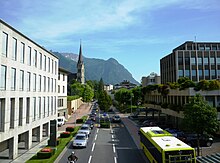
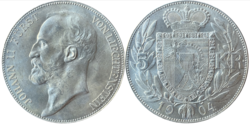
Despite its limited natural resources, Liechtenstein is one of the few countries in the world with more registered companies than citizens; it has developed a prosperous, highly industrialized free-enterprise economy and a financial service sector as well as a living standard that compares favourably with those of the urban areas of Liechtenstein's much larger European neighbours.
Liechtenstein participates in acustoms unionwith Switzerland and employs theSwiss francas the national currency. The country imports about 85% of its energy. Liechtenstein has been a member of theEuropean Economic Area(an organization serving as a bridge between theEuropean Free Trade Association(EFTA) and theEuropean Union) since May 1995.
The government is working to harmonize its economic policies with those of an integrated Europe. In 2008, the unemployment rate was 1.5%. Liechtenstein has only one hospital, the Liechtensteinisches Landesspital in Vaduz. As of 2014 theCIA World Factbookestimated the gross domestic product (GDP) on apurchasing power paritybasis to be $4.978 billion. As of 2021 the estimate per capita was $184,083.[70]
Industries include electronics, textiles, precision instruments, metal manufacturing, power tools, anchor bolts, calculators, pharmaceuticals and food products. Its most recognizable international company and largest employer isHilti,a manufacturer ofdirect fastening systemsand other high-end power tools. Many cultivated fields and small farms are found both in the Oberland and Unterland. Liechtenstein produces wheat, barley, corn, potatoes, dairy products, livestock andwine.
Taxation[edit]

The government of Liechtenstein taxes personal income, business income and principal (wealth). The basic rate ofpersonal income taxis 1.2%. When combined with the additional income tax imposed by the communes, the combined income tax rate is 17.82%.[76]An additional income tax of 4.3% is levied on all employees under the country'ssocial securityprogramme. This rate is higher for the self-employed, up to a maximum of 11%, making the maximum income tax rate about 29% in total. The basictax rate on wealthis 0.06% per annum, and the combined total rate is 0.89%. The tax rate on corporate profits is 12.5%.[70]
Liechtenstein'sgiftandestate taxesvary depending on the relationship the recipient has to the giver and the amount of the inheritance. The tax ranges between 0.5% and 0.75% for spouses and children and 18% to 27% for non-related recipients. The estate tax is progressive.
Liechtenstein has previously received significant revenues fromStiftungen( "foundations" ), financial entities created to hide the true owner of nonresident foreigners' financial holdings. The foundation is registered in the name of a Liechtensteiner, often a lawyer. This set of laws used to make Liechtenstein a populartax havenfor extremely wealthy individuals and businesses attempting to avoid or evade taxes in their home countries.[77]
In recent years, Liechtenstein has displayed stronger determination to prosecute international money launderers and worked to promote an image as a legitimate finance centre. In February 2008, the country'sLGT Bankwas implicated in atax-fraud scandal in Germany,which strained the ruling family's relationship with the German government. Crown Prince Alois has accused the German government of trafficking in stolen goods, referring to its $7.3 million purchase of private banking information offered by a former employee of LGT Group.[78][79]TheUnited States Senate's subcommittee on tax haven banks said that the LGT bank, owned by the princely family, and on whose board they serve, "is a willing partner, and an aider and abettor to clients trying to evade taxes, dodge creditors or defy court orders".[80]
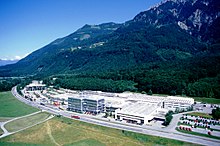
The2008 Liechtenstein tax affairis a series of tax investigations in numerous countries whose governments suspect that some of their citizens have evaded tax obligations by using banks and trusts in Liechtenstein; the affair broke open with the biggest complex of investigations ever initiated for tax evasion in Germany.[81]It was also seen as an attempt to put pressure on Liechtenstein, then one of the remaininguncooperative tax havens—along withAndorraandMonaco—as identified by the Paris-basedOrganisation for Economic Co-operation and Developmentin 2007.[82]On 27 May 2009 the OECD removed Liechtenstein from the blacklist of uncooperative countries.[83]
In August 2009, the British government departmentHM Revenue & Customsagreed with Liechtenstein to start exchanging information. It is believed that up to 5,000 British investors have roughly £3 billion deposited in accounts and trusts in the country.[84]
In October 2015, the European Union and Liechtenstein signed a tax agreement to ensure the automatic exchange of financial information in case of tax disputes. The collection of data started in 2016. It is another step to bring the principality in line with other European countries regarding its taxation of private individuals and corporate assets.[85]
Tourism[edit]
Tourism accounts for a large portion of Liechtenstein's economy.[citation needed]
Demographics[edit]
With a population of 39,315 as of 31 December 2021,[86]Liechtenstein isEurope's fourth-smallest country;Vatican City,San MarinoandMonacohave fewer residents. Its population is primarilyAlemannic-speaking, although one third is foreign-born, primarily German speakers fromGermany,Austria,andSwitzerland,along with other Swiss, Italians, andTurks.Foreign-born people make up two-thirds of the country's workforce.[87]
Liechtensteiners have an average life expectancy at birth of 82.0 years, subdividing as male: 79.8 years, female: 84.8 years (2018 est.). The infant mortality rate is 4.2 per 1,000 live births, according to 2018 estimates.
Languages[edit]
The official language is German, spoken by 92% of the population as their main language in 2020. 73% of Liechtenstein's population speak anAlemannicdialectof German at home that is highly divergent fromStandard Germanbut closely related to dialects spoken in neighbouring regions such as Switzerland andVorarlberg,Austria.[88]InTriesenberg,aWalser Germandialect promoted by the municipality is spoken.Swiss Standard Germanis also understood and spoken by most Liechtensteiners.
Religion[edit]

According to theConstitution of Liechtenstein,Catholicismis its officialstate religion:
The Catholic Church is the State Church and as such shall enjoy the full protection of the State
Liechtenstein offers protection to adherents of all religions, and considers the "religious interests of the people" a priority of the government.[89]In Liechtenstein's schools, although exceptions are allowed, religious education in Catholicism orProtestantism(eitherLutheranorCalvinist,or both) is legally required.[90]Tax exemptionis granted by the government to religious organizations.[90]According to thePew Research Center,social conflict caused by religious hostilities is low in Liechtenstein, and so is government restriction on the practice of religion.[91]
According to the 2010 census, 85.8% of the total population were Christian, of whom 75.9% adhered to theCatholicfaith, constituted in theCatholic Archdiocese of Vaduz,while 9.6% were eitherProtestant,mainly organized in theEvangelical Church in Liechtenstein(aUnited church,Lutheran & Reformed) and theEvangelical Lutheran Church in Liechtenstein,orOrthodox,mainly organized in the Christian-Orthodox Church.[92]The largest minority religion isIslam(5.4% of the total population).[93]
Education[edit]

The literacy rate of Liechtenstein is 100%.[70]In 2006Programme for International Student Assessmentreport, coordinated by theOrganisation for Economic Co-operation and Development,ranked Liechtenstein's education as the 10th-best in the world.[94]In 2012, Liechtenstein had the highest PISA scores of any European country.[95]
Within Liechtenstein, there are four main centres for higher education:
- University of Liechtenstein
- Private University in the Principality of Liechtenstein
- Liechtenstein Institute
- International Academy of Philosophy, Liechtenstein
There are nine public high schools in the country. These include:
- Liechtensteinisches Gymnasiumin Vaduz.
- RealschuleVaduz andOberschuleVaduz, in theSchulzentrum Mühleholz IIin Vaduz[96]
- Realschule Schaan and Sportschule Liechtenstein inSchaan[96]
Transport[edit]

There are about 250 kilometres (155 mi) of paved roadway within Liechtenstein, with 90 km (56 mi) of marked bicycle paths.
A 9.5 km (6 mi) railway connects Austria and Switzerland through Liechtenstein. Thecountry's railwaysare administered by theAustrian Federal Railwaysas part of the route betweenFeldkirch,Austria,andBuchs,Switzerland. Liechtenstein is nominally within the Austrian Verkehrsverbund Vorarlberg tariff region.[97]
There are four railway stations in Liechtenstein, namelySchaan-Vaduz,Forst Hilti,NendelnandSchaanwald,served by an irregularly stopping train service between Feldkirch and Buchs provided byAustrian Federal Railways.[98][99]
Liechtenstein Busis a subsidiary of theSwiss Postbus system,but separately run, and connects to the Swiss bus network atBuchsand atSargans.[100]Holders of aSwiss Travel Passcan travel for free on Liechtenstein’s buses.[101]
Liechtenstein is one of only a fewcountries without an airport.The nearest large airport isZurich AirportnearZürich,Switzerland(130 km or 80 miles by road). The nearest small airport isSt. Gallen Airport(50 km or 30 miles).Friedrichshafen Airportalso provides access to Liechtenstein, as it is 85 km (53 miles) away.Balzers Heliportis available for chartered helicopter flights.[102][103]
Culture[edit]
| Part ofa serieson the |
| Culture of Liechtenstein |
|---|
 |
| History |
| People |
| Languages |
| Mythology |
| Cuisine |
| Festivals |
| Religion |
| Music |
| Sport |
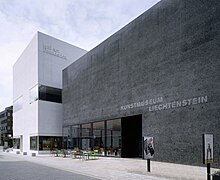

As a result of its small size, Liechtenstein has been strongly affected by external cultural influences, most notably those originating in the southern regions of German-speaking Europe, including Austria, Baden-Württemberg, Bavaria, Switzerland, and specificallyTiroland Vorarlberg.[citation needed]
The largest museum is theKunstmuseum Liechtenstein,an international museum of modern and contemporary art with an international art collection. The building by the Swiss architects Morger, Degelo, and Kerez is a landmark in Vaduz. It was completed in November 2000 and forms a "black box" of tinted concrete and black basalt stone. The museum collection is also the national art collection of Liechtenstein.[104]
The Historical Society of the Principality of Liechtenstein and theLiechtenstein National Museum(Liechtensteinisches Landesmuseum) also play a role in preserving the culture and history of the country.[105][106]The National Museum shows permanent exhibitions on the cultural and natural history of Liechtenstein as well as special exhibitions. There is also a stamp museum, ski museum, and a 500-year-old Rural Lifestyle Museum.[107]
TheLiechtenstein State Libraryis the library that haslegal depositfor all books published in the country.[108]PoetIda Ospelt-Amannpublished her works exclusively in the Alemannic dialect of Vaduz.[109][110]
The famous historical sites includeVaduz Castle,Gutenberg Castle,andVaduz Cathedral.[107]
The Private Art Collection of the Prince of Liechtenstein, one of the world's leading private art collections, is shown at theLiechtenstein Museumin Vienna.[111]
On the country's national holiday, all subjects are invited to the castle of the head of state. A significant portion of the population attends the national celebration at the castle where speeches are made and complimentary beer is served.[112]
Music and theatre are important parts of the culture. There are numerous music organizations such as the Liechtenstein Musical Company, the annual Guitar Days, and the InternationalJosef Gabriel RheinbergerSociety, which play in two main theatres.[citation needed]
Media[edit]
The primaryinternet service providerandmobile network operatorof Liechtenstein is Telecom Liechtenstein, located in Schaan.[citation needed]
There are two conventional television channels in the country. The private channel1FLTVwas created in 2008 with a goal of joining theEuropean Broadcasting Union,which it did not accomplish and has since abandoned. TheLandeskanal(de) ( "National Channel" ) is operated by the government's Unit for Information and Communication and carries government proceedings,public affairsprogramming, and cultural events. Both are seen on local cable providers, along with all major channels from the other German-speaking countries. Since Switzerland shut off itsdigital terrestrial televisionnetwork in 2019, the only free television signals available are German and Austrian channels from the Sender Pfänder (de) inBregenz.
Radio Liechtenstein (de), which was established in 2004 along with the public-service broadcasterLiechtensteinischer Rundfunk(LRF) that operates it, is the country's only domestic radio station based in Triesen. Radio Liechtenstein and several programs of SRF are broadcast from the Sender Erbi (de) overlooking Vaduz. Liechtenstein also has one major newspapers:Liechtensteiner Vaterland.
Amateur radiois a hobby of some nationals and visitors. However, unlike virtually every other sovereign nation, Liechtenstein does not have its ownITU prefix.Conventionally, amateurs are issued call signs with the Swiss prefix "HB", followed by "0" or "L".
Sports[edit]

Liechtensteinfootballteams play in the Swiss football leagues. TheLiechtenstein Football Cupallows access for one Liechtenstein team each year to theUEFA Europa Conference League;FC Vaduz,a team playing in theSwiss Challenge League,the second division in Swiss football, is the most successful team in the Cup, and scored their greatest success in theEuropean Cup Winners' Cup in 1996when they drew with and defeated the Latvian teamFC Universitate Rigaby 1–1 and 4–2, to go on to a lucrative fixture againstParis Saint-Germain F.C.,which they lost 0–3 and 0–4.
TheLiechtenstein national football teamis regarded as an easy target for any team drawn against them; this was the basis for a book about Liechtenstein's unsuccessful qualifying campaign for the2002 World Cupby British authorCharlie Connelly.In one surprising week during autumn 2004, however, the team managed a 2–2 draw withPortugal,who only a few months earlier had been the losing finalists in theEuropean Championships.Four days later, the Liechtenstein team traveled to Luxembourg, where they defeatedthe home team4–0 in a2006 World Cupqualifying match.
In the qualification stage of the European Championship 2008, Liechtenstein beat Latvia 1–0, which prompted the Latvian coach's resignation. They went on to beat Iceland 3–0 on 17 October 2007, which is considered one of the most dramatic losses of the Icelandic national football team. On 7 September 2010, they came within seconds of a 1–1 draw againstScotlandin Glasgow, having led 1–0 earlier in the second half, but Liechtenstein lost 2–1 thanks to a goal byStephen McManusin the 97th minute. On 3 June 2011, Liechtenstein defeatedLithuania2–0. On 15 November 2014, Liechtenstein defeatedMoldova0–1 withFranz Burgmeier's late free kick goal inChișinău.
As analpinecountry, the main sporting opportunity for Liechtensteiners to excel is in winter sports such asdownhill skiing:the country's single ski area isMalbun.Hanni Wenzelwon two gold medals and one silver medal in the 1980Winter Olympics(she won bronze in 1976), her brotherAndreaswon one silver medal in 1980 and one bronze medal in 1984 in thegiant slalomevent, and her daughterTina Weiratherwon a bronze medal in 2018 in theSuper-G.With ten medals overall (all in alpine skiing), Liechtenstein has won more Olympic medals per capita than any other nation.[113]It is the smallest country to win a medal in any Olympics, Winter or Summer, and currently the only country to win a medal in the Winter Games but not in the Summer Games. Other notable skiers from Liechtenstein areMarco Büchel,Willi Frommelt,Paul FrommeltandUrsula Konzett.
Another discipline unusually popular with Liechtensteiners ismotorsport;American-born German-ColombianRikky von Opelraced under the flag of Liechtenstein inFormula Onein1973and1974,andManfred Schurticompeted in 9 editions of the24 Hours of Le Mansas aPorschefactory driver with a best finish of 4th overall in1976.[114][115]The country is currently represented internationally byFabienne WohlwendandMatthias Kaiserinendurance racing.[116][117]
Other sports Liechtenstein athletes have had success in includetennis,withStephanie VogtandKathinka von Deichmannboth having varying degrees of success on the women's tour, as well asswimming;bothJulia HasslerandChristoph Meierrepresented the country at the2016 Summer Olympicswith the former the nations' flag bearer.[118][119]
In March 2020, the distance world record for electric motorcycles was set in Liechtenstein. ArtistMichel von Telldrove over 1,000 miles within 24 hours on the first electricHarley-Davidson.The Record is still current in 2023 and ended inRuggell.The Event became global media attention.[120][121][122]
Youth[edit]
Liechtensteincompetes in the Switzerland U16 Cup Tournament, which offers young players an opportunity to play against top football clubs.
Security and defence[edit]

TheLiechtenstein National Policeis responsible for keeping order within the country. It consists of 87 field officers and 38 civilian staff, totaling 125 employees. All officers are equipped withsmall arms.The country has one of the world's lowestcrime rates.Liechtenstein's prison holds few, if any, inmates, and those with sentences over two years are transferred toAustrian jurisdiction.[123]The Liechtenstein National Police maintains a trilateral treaty with Austria and Switzerland that enables close cross-border cooperation among the police forces of the three countries.[124]
Liechtenstein follows a policy ofneutralityand is one of the fewcountries in the world that maintain no militaryalthough its police force maintains a paramilitary force, the Princely Liechtenstein Security Corps, within the organisation that might act as itsde factoarmy if an invasion of Liechtenstein ever occurred. The corps provides heavy backup for the National Police as well as Honor Guards at the Royal Palace and official functions. However, Liechtenstein can reinstate its military if deemed necessary.
The army was abolished for financial reasons soon after theAustro-Prussian War of 1866,in which Liechtenstein fielded an army of 80 men, although they were not involved in any fighting.[125][126]No casualties were incurred; in fact, the unit numbered 81 upon return due to an Italian military liaison who accompanied the army back home.[127]The demise of theGerman Confederationin that war freed Liechtenstein from its international obligation to maintain an army, and parliament seized this opportunity and refused to provide funding for one. The Prince objected, as such a move would leave the country defenceless, but relented on 12 February 1868 and disbanded the force.[126]The last soldier to serve under the colours of Liechtenstein,Andreas Kieber,died in 1939 at age 95.[128]
- In 1985, the Swiss Army fired off shells during an exercise and mistakenly burned a patch of forest inside Liechtenstein. The incident was said to have been resolved "over a case of white wine".[112]
- In March 2007, a 170-man Swiss infantry unit got lost during a training exercise and inadvertently crossed 1.5 km (0.9 miles) into Liechtenstein. The accidental invasion ended when the unit realized their mistake and turned back.[129]The Swiss Army later informed Liechtenstein of the incursion and offered official apologies,[130]to which an internal ministry spokesperson responded, "No problem, these things happen."[131]
- On 20 September 2017, Liechtenstein signed the United NationsTreaty on the Prohibition of Nuclear Weapons.[132]
See also[edit]
References[edit]
- ^Bevölkerungsstatistik 2017Llv.li, p. 7
- ^"213.001d Ständige Bevölkerung nach Religion, Stichtag und Variable der Einheit".statistikportal.li.Amt Für Statistik Fürstentum Liechtenstein. 15 December 2022.Retrieved11 March2024.
- ^Raum, Umwelt und EnergieArchived12 October 2011 at theWayback MachineLandesverwaltung Liechtenstein. Retrieved 2 October 2011.
- ^"Bevölkerungsstand".
- ^"Liechtenstein in Figures: 2016"(PDF).Llv.li.Retrieved3 August2017.
- ^ab"Amt für Statistik, Landesverwaltung Liechtenstein".Llv.li.Retrieved30 June2020.
- ^abcKey Figures for LiechtensteinArchived17 September 2009 at theWayback MachineLandesverwaltung Liechtenstein. Retrieved 1 July 2012.
- ^abcWorld Development Indicators,World Bank.Retrieved 1 July 2012. Note: "PPP conversion factor, GDP (LCU per international $)" and "Official exchange rate (LCU per US$, period average)" for Switzerland were used.
- ^abBasic Data Selection,(Select all countries, "GDP, Per Capita GDP - US Dollars", and 2020 to generate table),United Nations Statistics Division.Access date: 29 January 2022.
- ^"Human Development Report 2023/2024"(PDF).United Nations Development Programme.13 March 2024.Archived(PDF)from the original on 13 March 2024.Retrieved13 March2024.
- ^"Definition of 'Liechtenstein'".Collins English Dictionary.
- ^Duden Aussprachewörterbuch,s.v. "Liechtenstein[er]".
- ^"IGU regional conference on environment and quality of life in central Europe".GeoJournal.28(4). 1992.doi:10.1007/BF00273120.S2CID189889904.
- ^[1].Amt für Statistik. Liechtenstein. 30 June 2019
- ^"The smallest countries in the world by area".www.countries-ofthe-world.com.Retrieved3 July2018.
- ^Osborn, Andrew (17 March 2003)."European prince wins new powers".The Guardian.Retrieved20 March2024.
- ^CIA – The World Factbook – Country Comparison:: GDP – per capita (PPP)Archived24 April 2013 at theWayback MachineCia.gov. Retrieved 24 December 2011.
- ^abcHistory.swissworld.org. Retrieved 27 June 2009
- ^"Römerzeit – Historisches Lexikon".historisches-lexikon.li(in German).Retrieved5 January2023.
- ^"Römerzeit – Historisches Lexikon".historisches-lexikon.li(in German).Retrieved5 January2023.
- ^abSwitzerland historyNationsencyclopedia.com. Retrieved 27 November 2009
- ^History of SwitzerlandNationsonline.org. Retrieved 27 November 2009.
- ^Klieger, P. Christiaan (29 November 2012). "Principality of Liechtenstein".The Microstates of Europe: Designer Nations in a Post-Modern World.Anthropology, political science. Lanham, Maryland: Lexington Books (published 2012). p. 41.ISBN978-0-7391-7427-2.Retrieved27 January2021.
In 1300, the Walsers, a mountain-dwelling Alemannic speaking group from Valais in Switzerland, entered and inhabited the modern eastern Switzerland, Liechtenstein, and Vorarlberg, Austria. The mountain village of Triesenberg is a modern preserve of the Walser people and their dialect.
- ^Eccardt, Thomas (2005).Secrets of the Seven Smallest States of Europe.Hippocrene Books. p. 176.ISBN978-0-7818-1032-6.
- ^abc"History, creation of Liechtenstein".liechtenstein.li.Liechtenstein Marketing. Archived fromthe originalon 10 March 2021.Retrieved1 April2017.
- ^Marxer, Roland (31 December 2011)."Zollanschlussvertrag".Historisches Lexikon(in German).Retrieved25 October2023.
- ^Quaderer, Rupert (31 December 2011)."Novemberputsch 1918".Historisches Lexikon des Fürstentums Liechtenstein(in German).Retrieved3 October2023.
- ^Wille, Herbert (31 December 2011)."Verfassung".Historisches Lexikon des Fürstentums Liechtenstein(in German).Retrieved24 December2023.
- ^"Liechtenstein: Nazi Pressure?".Time.New York. 11 April 1938. Archived fromthe originalon 9 March 2007.Retrieved26 May2010.
- ^"NAZIS IN CABINET IN LIECHTENSTEIN; Prince Franz Joseph, the New Ruler, Names Them Though Pledging Independence HITLER MOVEMENT GAINS Its Growing Strength Was One Reason for Abdication of Franz 1, Old Sovereign".The New York Times.1 April 1938.Retrieved16 May2023.
- ^"Liechtenstein Jails Nazi For Attempt at Uprising".The New York Times.27 April 1939.Retrieved18 May2023.
- ^"Prince Franz Josef II visits Adolf Hitler in Berlin".Liechtenstein-Institut(in German). 27 March 2019.Retrieved17 May2023.
- ^"Prince Franz of the 'Postage Stamp State' Retires".St. Louis Post-Dispatch.1 May 1938. p. 76.Archivedfrom the original on 21 April 2020 – viaNewspapers.com.
- ^"Prince Franz to Return to Estate".Daily News.1 April 1938. p. 216.Archivedfrom the original on 20 April 2020 – viaNewspapers.com.
- ^"Oldest Former Ruler Succumbs".Kenosha News.26 July 1938. p. 1.Archivedfrom the original on 20 April 2020 – viaNewspapers.com.
- ^"Prince Franz Josef II Von Und Zu Liechtenstein".Liechtenstein The Princely Collections(in German). 21 April 2023.Retrieved21 April2023.
- ^"Nazi crimes taint Liechtenstein".BBC News.14 April 2005.Retrieved3 August2017.
- ^"Nazi Camp Labor Used in Liechtenstein".Deutsche Welle.14 April 2005. Archived fromthe originalon 13 January 2018.
- ^"Liechtenstein and the Czech Republic establish diplomatic relations"(PDF).Government Spokesperson's Office, the Principality of Liechtenstein. 13 July 2009. Archived fromthe original(PDF)on 11 May 2011.Retrieved6 August2009.
- ^"Navázání diplomatických styků České republiky s Knížectvím Lichtenštejnsko"[Establishment of diplomatic relations with the Czech Republic and the Principality of Liechtenstein] (in Czech). Ministry of Foreign Affairs of the Czech Republic. 13 July 2009.Retrieved28 October2011.
- ^"MINA Breaking News – Decades later, Liechtenstein and Czechs establish diplomatic ties".Macedoniaonline.eu. 15 July 2009. Archived fromthe originalon 21 November 2009.Retrieved6 June2010.
- ^"Liechtenstein and the Slovak Republic establish diplomatic relations"(PDF).Government Spokesperson's Office, the Principality of Liechtenstein. 9 December 2009. Archived fromthe original(PDF)on 11 May 2011.Retrieved22 December2009.
- ^Congress, United States (1967).Congressional Record: Proceedings and Debates of the... Congress.U.S. Government Printing Office.
- ^Guinness Book of World Records.Sterling Publishing Company. 1972.
- ^"United States Income Tax Treaties – A to Z".Internal Revenue Service.Retrieved7 February2021.
- ^Lomas, Ulrika (16 March 2018)."US And Liechtenstein To Negotiate Double Tax Treaty".Tax-News.com.Archived fromthe originalon 21 May 2022.Retrieved7 February2021.
- ^Dimitropoulou, Alexandra (18 September 2019)."These Are The World's Richest Royals, 2019".CEO World.Archivedfrom the original on 20 May 2020.
- ^Marxer, Wilfried; Pállinger, Zoltán Tibor (2007)."System contexts and system effects of direct democracy-direct democracy in Liechtenstein and Switzerland compared".Direct Democracy in Europe.VS Verlag für Sozialwissenschaften. pp. 12–29.doi:10.1007/978-3-531-90579-2_1.ISBN978-3-531-90579-2.Retrieved31 October2020.
- ^"Country profile: Liechtenstein – Leaders".BBC News. 6 December 2006. Retrieved 29 December 2006.
- ^"Liechtenstein profile - Overview".BBC News.8 March 2017.Retrieved3 September2023.
- ^Opinion on the amendments to the constitution of Liechtenstein proposed by the Princely House of LiechtensteinVenice Commission
- ^"Principality of Liechtenstein website – Parliamentary elections".Archived fromthe originalon 7 August 2004.Retrieved11 January2010..Retrieved 11 January 2010.
- ^"Principality of Liechtenstein – Government".Archived fromthe originalon 7 August 2007.Retrieved11 January2010..Retrieved 11 January 2010.
- ^"Liechtenstein 1921 (rev. 2011) Constitution - Constitute".www.constituteproject.org.Retrieved27 September2023.
- ^"Liechtenstein Women Win Right to Vote".The New York Times.2 July 1984. Retrieved 8 July 2011.
- ^"Liechtenstein: Parlament berät Vorlage zur Eheöffnung".Mannschaft Magazin.3 March 2024.Retrieved7 March2024.
- ^""Ehe für Alle" ab 1. Januar 2025 ".www.radio.li(in German).Retrieved8 March2024.
- ^Vaterland.li: Landtag beschliesst Ehe für alle,May 16, 2024
- ^Lara, María; Lara, Laura (12 November 2019).Princesas en jeans: Historia, significado y vigencia de la monarquía(in Spanish). EDAF.ISBN978-84-414-4000-5.
- ^Bas, Philippe Le (1843).Estados de la Confederación Germánica: continuación de la historia general de Alemania(in Spanish). Imp. del Imparcial.
- ^Winkler, Günther (2 September 2009).The Council of Europe: Monitoring Procedures and the Constitutional Autonomy of the Member States, A European law study, based upon documents and commentaries, illustrated by the Council of Europe's actions against the constitutional reform in Liechtenstein.Springer Vienna.ISBN978-3-211-10030-1.
- ^Duursma, Jorri C.; Duursma, Jorri Carolina; Crawford, Whewell Professor of International Law and Fellow James; Bell, Professor of Public and Comparative Law and Pro-Vice-Chancellor John (31 October 1996).Fragmentation and the International Relations of Micro-states: Self-determination and Statehood.Cambridge University Press.ISBN978-0-521-56360-4.
- ^La nueva agenda del comercio de la OMC(in Spanish). Universidad del Rosario. 2000.ISBN978-958-9203-70-5.
- ^"Summit of German-speaking Heads of State in Linz 2019".Vienna International News.5 June 2019.
- ^""Aussenpolitik, Diplomatie und Mitgliedschaften. Portal des Fürstentums Liechtenstein,". ( "Foreign Policy, Diplomacy and Memberships. Portal of the Principality of Liechtenstein,".) ".
- ^Vespierre, Gérard."Rule of Law in the Heart of Europe: How Andorra, Liechtenstein and Monaco have undermined EU values"(PDF).The Bridge Tank.Retrieved15 May2024.
- ^"Gewässer – Revitalisierungsprojekte in Liechtenstein, Liechtensteiner Binnenkanal (LBK)"(PDF).Regierung des Fürstentums Liechtenstein(in German).Retrieved7 February2024.
- ^"Tiny Liechtenstein gets a little bigger",29 December 2006.
- ^"Liechtenstein redraws Europe map".BBC News.28 December 2006.
- ^abcd"Liechtenstein".The World Factbook.Central Intelligence Agency.Retrieved3 August2017.
- ^"Climate Normals Vaduz (Reference period 1991−2020)"(PDF).Swiss Federal Office of Meteorology and Climatology, MeteoSwiss. 13 January 2022. Archived fromthe original(PDF)on 18 August 2022.Retrieved13 January2022.
- ^"Climate Normals Vaduz (Reference period 1981−2010)"(PDF).Swiss Federal Office of Meteorology and Climatology, MeteoSwiss. 13 January 2022. Archived fromthe original(PDF)on 25 July 2022.Retrieved13 January2022.
- ^ab"Geologie, Gebirge, Berge, Gipfel, Alpen – Fürstentum Liechtenstein".www.liechtenstein.li.Archived fromthe originalon 25 January 2021.Retrieved18 February2021.
- ^Der westliche Rätikon wird nur aus orographisch-systematischen Gründen zu den zentralen Ostalpen gerechnet, weil er südlich der Ill–Arlberg-Furche liegt.
- ^"Stabsstelle für Kommunikation und Öffentlichkeitsarbeit: Fürstentum Liechtenstein → Geologie".
- ^Encyclopedia of the Nations.Nationsencyclopedia.com. Retrieved 24 December 2011.
- ^"Billionaire Tax Haven Liechtenstein Loses on Bank Reforms".Bloomberg.com.2 May 2013.Retrieved3 August2017.
- ^Wiesmann, Gerrit (23 February 2008). "Lilliput's giant-slayer."Financial Times.London.
- ^"Pro Libertate: A Parasite's Priorities (Updated, February 23)".Freedominourtime.blogspot.com.22 February 2008.Retrieved3 August2017.
- ^"Tax Me If You Can".ABC News Australia.6 October 2008. Archived fromthe originalon 12 December 2009.Retrieved6 June2010.
- ^"Skandal gigantischen Ausmaßes".Süddeutsche Zeitung(in German). Munich. 17 May 2010.Retrieved17 May2010.
- ^Esterl, Mike;Simpson, Glenn R.;Crawford, David (19 February 2008)."Stolen Data Spur Tax Probes".The Wall Street Journal.New York.Retrieved20 February2008.
- ^Removal from OECD List of Unco-operative Tax Havens.Oecd.org. Retrieved 24 December 2011.
- ^"UK signs Liechtenstein tax deal".BBC News.11 August 2009. Retrieved 24 December 2011.
- ^"EU and Liechtenstein sign deal on automatic exchange of tax data"(Press release). Brussels: European Council. 28 October 2015.Retrieved15 August2017.
- ^"Bevölkerungsstand: Bevölkerungsstand per 31. Dezember 2021"(in German). Amt für Statistik Fürstentum Liechtenstein.Retrieved22 July2022.
- ^"WT/TPR/S/280 • Switzerland and Liechtenstein"(PDF).WTO.Retrieved26 January2015.
- ^"Volkszählung 2020 - Erste Ergebnisse"(PDF)(in German). Amt für Statistik Fürstentum Liechtenstein.Retrieved17 July2022.
- ^abJeroen Temperman (30 May 2010).State-Religion Relationships and Human Rights Law: Towards a Right to Religiously Neutral Governance.BRILL. pp. 44–45.ISBN978-90-04-18148-9.Retrieved31 July2012.
- ^abAili Piano (30 September 2009).Freedom in the World 2009: The Annual Survey of Political Rights & Civil Liberties.Rowman & Littlefield. p. 426.ISBN978-1-4422-0122-4.Retrieved31 July2012.
- ^"Global Restrictions on Religion"(PDF).Pew Research Center. Archived fromthe original(PDF)on 17 January 2013.Retrieved3 August2017.
- ^"Aktuell:: Orthodoxie"(in German). www.orthodoxie.li.Retrieved26 October2018.
- ^"Volkszählung 2010".Llv.li.Retrieved3 August2017.
- ^Range of rank on the PISA 2006 science scale.Retrieved 24 December 2011
- ^"PISA 2012 Results in Focus"(PDF).Paris: OECD.Retrieved3 August2017.
- ^ab"Weiterführende Schulen SchaanArchived18 May 2016 at the Portuguese Web Archive. "Commune of Schaan. Retrieved 12 May 2016." Realschule Schaan Duxgass 55 9494 Schaan "and" Sportschule Liechtenstein Duxgass 55 9494 Schaan "and" Realschule Vaduz Schulzentrum Mühleholz II 9490 Vaduz "and" Oberschule Vaduz Schulzentrum Mühleholz II 9490 Vaduz "
- ^Verkehrsverbund Vorarlberg.Vmobil.at. Retrieved 24 December 2011.
- ^"Railways in Liechtenstein".www.sinfin.net.Retrieved27 September2023.
- ^Morgan, Sam (2 September 2020)."Liechtensteiners say 'nein' to new railway".www.euractiv.com.Retrieved27 September2023.
- ^"The history of PostBus".PostBus.Retrieved27 September2023.
- ^About Swiss Travel Pass -https://www.swiss-pass.ch/swiss-pass/
- ^Heliport Balzers FL LSXB.Tsis.ch. Retrieved 24 December 2011.
- ^Heliports – Balzers LSXB – Heli-Website von Matthias VogtArchived18 February 2010 at theWayback Machine.Heli.li. Retrieved 24 December 2011.
- ^"Kunstmuseum Liechtenstein - All You Need to Know BEFORE You Go (with Photos)".Tripadvisor.Retrieved27 September2023.
- ^"History – Liechtensteinisches Landesmuseum".www.landesmuseum.li.Retrieved27 September2023.
- ^"Liechtenstein NationalMuseum".tourismus.li.Retrieved27 September2023.
- ^ab"Best things to see and do in Liechtenstein".World Travel Guide.Retrieved29 April2023.
- ^Intranda."English Information".Liechtensteinische Landesbibliothek(in German).Retrieved29 April2023.
- ^Phaf-Rheinberger, Ineke (12 January 2021).Ricardo Porros Architektur in Vaduz und Havanna(in German). Books on Demand. p. 76.ISBN978-3-7526-8278-6.
- ^Allmende(in German). J. Thorbecke. 1998. p. 7.
- ^Vaduz-Vienna, LIECHTENSTEIN The Princely Collections."Garden Palace | permanent presentation |".LIECHTENSTEIN. The Princely Collections, Vaduz–Vienna.Retrieved7 September2023.
- ^abLetzing, John (16 April 2014)."Liechtenstein Gets Even Smaller".The Wall Street Journal.Retrieved21 June2018.
- ^"Per Capita Olympic Medal Table".Archived fromthe originalon 13 September 2008.Retrieved24 January2009.
- ^"Rikky von Opel" OldRacingCars.com ".OldRacingCars.com. 24 January 2015.
- ^"Manfred Schurti – Austro Classic Online (in German)".Austro Classic. 31 January 2013.
- ^"Under the Visor: Fabienne Wohlwend".W Series.14 February 2020.
- ^"(FL) Matthias Kaiser – Driver Database".Driver Database. 4 September 2020.
- ^"Stephanie Vogt beendet ihre Karriere (in German)".Liechtensteiner Vaterland.8 August 2016.
- ^"The Flagbearers for the Rio 2016 Opening Ceremony".16 August 2016.Retrieved27 August2016.
- ^S.A.P, El Mercurio (24 March 2020)."Moto eléctrica de Harley-Davidson rompe récord al recorrer 1.700 km en 24 horas | Emol.com".Emol(in Spanish).Retrieved4 January2023.
- ^"Harley-Davidson's LiveWire EV Motorcycle | GreenCars".www.greencars.com.Retrieved4 January2023.
- ^Bartholdi, Martin A. (28 March 2020)."Schweizer fährt Weltrekord auf Elektrotöff".Blick(in Swiss High German).Retrieved4 January2023.
- ^"Liechtenstein | World Prison Brief".www.prisonstudies.org.Retrieved29 April2023.
- ^"Liechtenstein – facts and figures"(PDF).Archived fromthe original(PDF)on 7 January 2006.Retrieved2 May2010..Office for Foreign Affairs of Liechtenstein.
- ^Ospelt, Joseph (1924)."Der 1866er Feldzug fürstlich leichtensteinischen Bundeskontingentes".Jahrbuch des Historischen Vereins für das Fürstentum Liechtenstein.24.Retrieved20 December2023.
- ^abFrommelt, Fabian; Rupert, Quaderer (31 December 2011)."Militär".Historisches Lexikon des Fürstentums Liechtenstein(in German).Retrieved23 February2024.
- ^"Liechtenstein"(PDF).Lonely Planet Publications. Archived fromthe originalon 27 October 2011.Retrieved28 February2020.
- ^Beattie, David (2004).Liechtenstein: A Modern History.London:I.B. Tauris.p. 30.ISBN978-1-85043-459-7.
- ^CBC News (2 March 2007)."Not-so-precise Swiss army unit mistakenly invades Liechtenstein".CBC News.Retrieved18 September2011.
- ^Hamilton, Lindsay (3 March 2007)."Whoops! Swiss Accidentally Invade Liechtenstein".ABC News.Retrieved18 September2011.
- ^Brook, Benedict (24 March 2017)."Liechtenstein, the country that's so small it keeps being invaded by its bigger neighbour".news.com.au.Retrieved30 April2018.
- ^"Chapter XXVI: Disarmament – No. 9 Treaty on the Prohibition of Nuclear Weapons".United Nations Treaty Collection. 7 July 2017.
External links[edit]
- Official website(in German and English)
- Princely House of Liechtenstein
- Parliament of Liechtenstein
- Government of Liechtenstein
- Official tourism of Liechtenstein
- Statistics Office of Liechtenstein(in German)
- Liechtenstein.The World Factbook.Central Intelligence Agency.
- LiechtensteinfromUCB Libraries GovPubs(archived 2 October 2012)
- LiechtensteinatCurlie
- Liechtenstein profilefromBBC News
 Wikimedia Atlas of Liechtenstein
Wikimedia Atlas of Liechtenstein Geographic data related toLiechtensteinatOpenStreetMap
Geographic data related toLiechtensteinatOpenStreetMap- Coolidge, William Augustus Brevoort(1911)..Encyclopædia Britannica.Vol. 16 (11th ed.). pp. 592–593.
- Liechtenstein
- 1719 establishments in the Holy Roman Empire
- Christian states
- Countries in Europe
- Countries and territories where German is an official language
- Landlocked countries
- Member states of the Council of Europe
- Member states of the European Free Trade Association
- Member states of the United Nations
- NUTS 1 statistical regions of the European Union
- NUTS 2 statistical regions of the European Union
- NUTS 3 statistical regions of the European Union
- Principalities of the Holy Roman Empire
- Principalities
- States and territories established in 1866
- States of the Confederation of the Rhine
- States of the German Confederation
- Tax avoidance






